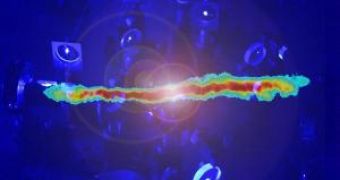Interstellar clouds of dust and gas pulled together by gravitational forces often experience instabilities, that can result in spectacular explosions such as that of a supernova. Furthermore, if the individual atoms that compose the respective cloud of gas behave like tiny magnets, the same outcome could be experienced, as the magnetic forces of attraction between each other pressure towards a rapid compression of matter, thus the cloud of gas suffers an implosion.
To give you an example of the instability of matter determined by the forces of attraction, you will only have to remember what happens when holding two separate magnets in the palm of your hand. The magnetic attraction experienced by the two ultimately forces them to rapidly stick together. The same process takes place even when magnets are aligned in a parallel fashion, however the same cannot be said when they are aligned in parallel and placed in the same plane at the same time.
This basically means that, while in a pancake shape, attracting matter experiences relative stability; the reverse outcome can be obtained with the disposal of matter in a cigar-like spherical geometrical shape, as it is required the presence of additional repulsion forces to stop the atoms from collapsing the cloud of gas.
The findings are detailed by the research group lead by Professor Tilman Pfau, from the University of Stuttgart. According to Professor Pfau, the experiment related to the properties of 'quantum gases' implied the use of a gas consisting of cooled chromium atoms forced into a Bose-Einstein condensate state. BEC's are extremely useful in the study of quantum gas properties, as they can be easily shaped into the desired geometrical objects. Previously, Professor Pfau was able to accurately predict the conditions of the quantum gas which would describe the border between stable and unstable clouds of gas, finding the pancake shape solution as the form required to keep it stable.
Alternatively, the research team had also studied the collapse phenomenon, which is routinely called 'Bose Nova' due to the similarities with supernova explosions.

 14 DAY TRIAL //
14 DAY TRIAL //